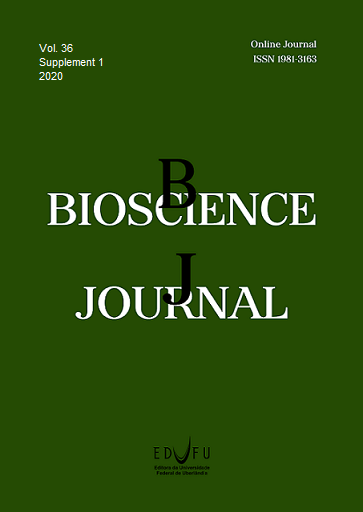Cytogenotoxic effects of nitrogen on hydroponic lettuce
DOI:
https://doi.org/10.14393/BJ-v36n0a2020-53643Palavras-chave:
Cytotoxicity, Genotoxicity, Lactuca sativa, Nitrogen, ToxicityResumo
Nitrogen accumulation in hydroponically-grown lettuce may pose a health risk to consumers. Thus, the objective of this study was to analyze different concentrations of nitrogen applications in hydroponic lettuce cultivation and their effect on toxicity, cytotoxicity and genotoxicity. A nutrient film technique (NFT) hydroponic system was used to grow the lettuce variety “Vanda.” The treatments consisted of different concentrations of nitrogen (in the form of calcium nitrate) in Furlani solution (75, 100, 125 and 150%), a negative and a positive control. The following commercial characteristics were measured: plant fresh weight (PFW), root fresh weight (RFW), shoot fresh weight (SFW), shoot diameter (SD), root dry weight (RDW), shoot dry weight (SDW) and leaf nitrogen (LN). Cytogenotoxicity was indicated by toxicity, cytotoxicity and genotoxicity, which were in turn determined by root length, the mitotic index, chromosomal aberrations and the presence of micronuclei. The nitrogen concentrations used in this experiment did not cause phenotypic toxicity or cytotoxicity in lettuce roots. The most severe genotoxicity was observed at the 125% nitrogen concentration, which nevertheless did not affect commercial characteristics. Although nitrogen fertilization provides great benefits to agriculture, such as greater yields, indiscriminate use should be avoided since concentrations above recommended rates may induce genotoxicity.
Downloads
Downloads
Publicado
Como Citar
Edição
Seção
Licença
Copyright (c) 2020 Alcione da Silva Arruda, Wesley Costa Silva, Roberta Camargos de Oliveira, Ernane Miranda Lemes, Gabriela da Silva Guimarães, Robson José de Oliveira Júnior, José Magno Queiroz Luz

Este trabalho está licenciado sob uma licença Creative Commons Attribution 4.0 International License.






